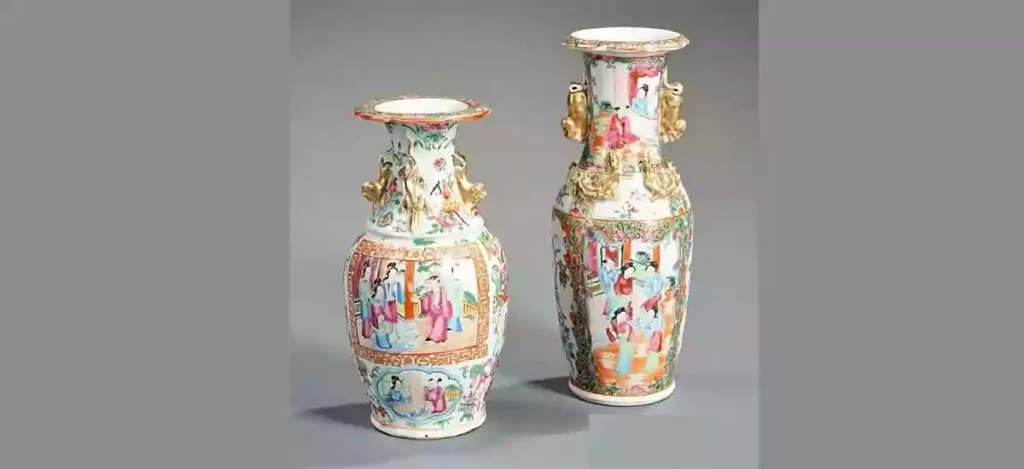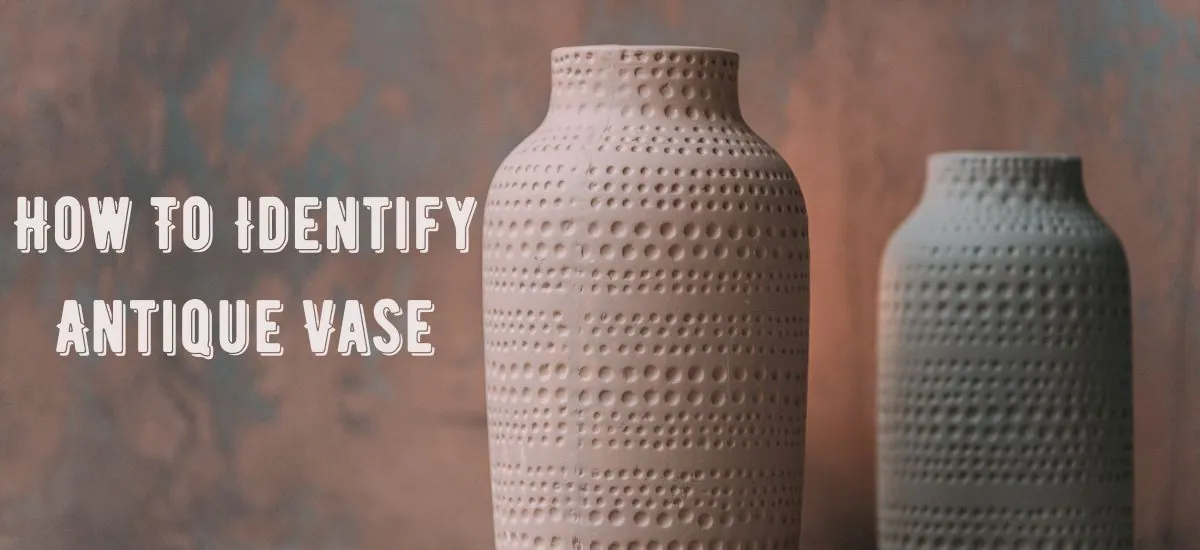The market for antique vases is vast, but the catch lies in how to identify antique vases. It’s indeed tricky, but thankfully there are some antique vases markings that make the identification process easy. These vase identification marks include several signs like thickness, finish, or even the artist’s name. This is usually placed at the bottom of the vase.
Often, the artist’s name is seen with the company name and if that is the case, assured that you have a genuine piece in your procession. Besides, if the vase is glass made, checking its texture, glass quality, thickness and composition also indicate the piece’s age.
This article will explore all the different ways to identify antique vases markings and vintage vases worth money.
How To Identify Antique Vases? (Step-by Step)

As mentioned earlier, some tell-tale identification marks will set apart a fake vase from a genius antique. In this section, we will identify those pointers.
Check The Bottom Of The Vase
First, carefully place the vase upside down on a soft padded surface and check the bottom of the vase for logos or company markings. These marks can either be printed or inked or even engraved. The symbols will, of course, vary as different manufacturers use different techniques.
However, on glass and crystal vases, the marking might be very faint. The maker’s signature is often stamped or inscribed for pottery or porcelain vases.
Identify The Mark
Once you see the identification mark, run a quick internet search to identify the mark. You can also take a picture of the mark and search directly.
However, if you like the old-school methods, you can check the loc library to identify the mark. Antique catalogs also provide truthful information; however, if all these methods seem challenging, you can take help from an appraiser.
If you have an antique vase marked NIPPON, you are in possession of a true antique. This word is inscribed in vases that were manufactured in Japan in the 20tu century.
Related Search: Valuable Antique Telephones
Collection Name Or Molds
A collection name or a mold number is usually found on stoneware vases. Since the artists created the piece from molds, these numbers or names would get engraved on the vases.
These mold numbers can be traced to books that collectors can refer to while determining the value of the pieces.
Check Overmark
Before determining your old glass vases are worth money, you must check their overmark. As the name suggests, an over mark is a logo or sign left over the manufacturer’s mark. So, turn your case over and look closely for any such markings. These marks are often glazed during finishing touching, resulting in smudging both the marks.
An overmark is a unique identification mark. It indicates that the vase was manufactured sometime between 1880-1930. Most often, such cases are imported from Europe.
Inspect The Edges
Many antique glass vases were hand-blown, and their edges were hand-polished. On inspection, you can see that the edges are shiner and other than the rest of the vase.
Since many early case manufacturers use this technique, vases with finner rims coupled with the manufacturer’s mark are sure of an antique vase.
Check Out Composition
The number of counterfeits and duplicates has significantly increased over the years. Plus, they are perfect copies, thus telling them from the original is challenging. Therefore, it has become imperative to check the composition of the vases to check their authenticity.
For instance, antique carnival vases had a metallic paint coating which made these vases heavier and bulkier than the new vases. However, vases produced during the Great Depression were far lighter and more delicate.
Besides, a hand-made vase will always have some flaws compared to an industrially made piece spat out from a machine. Thus, the minor imperfections are a sign of the original. The old-age wood-based kiln-produced vases will have slight variations.
Also Read: Vintage & Valuable Hummel Plates
Additionally, the crackling of glass, coarseness of the mark, and asymmetry are the tell-tale signs of an antique.
Get An Appraisal
The steps above are easier to state than follow. Thus, you will often have to employ an expert to identify an antique. A qualified antique expert or a dealer will be able to assess the genuinity of a vase for you.
A certified appraiser will also not raise a conflict of interest as most likely they will not try to purchase the piece from you.
Types Of Vases

If you want an antique vase, here are a few valuable vases to look for.
Antique Chinese
If you are confused about how to tell if a Chinese vase is valuable, this section can come in handy. It’s known that the Sung/Song dynasty citizens were the first to carve the first vases. They crafted these humble yet unique stonewares between 960-1279.
A few private collectors own these wonders, but most are in the Porcelain House, Tianjin, China.
The best Ming dynasty vases are from circa 1364-1644. These should not be confused with the 7th-century rough porcelain pieces from Vietnam.
Antique Japanese
While identifying valuable vases to look for, you cannot miss antique Japanese vases. These pieces are always pricier than the Chinese counterfeits.
Mostly, antique Japanese vases are made from porcelain. The Imari vases are the most famous of the Japanese vases out there. These vases are characterized by red and gold embellishments and blue underglaze.
You May Also Search For: Antique Singer Sewing Machine
However, the sheer number of Imari counterfeits makes identifying an original one difficult. It takes a true art appreciator and aficionado to identify an original.
Antique European
Vases came to be produced in Europe only in the 17th century. European artisans started mastering oriental patterns and eventually created their style. Meissen was one such famous 18th-century manufacturer who made many beautiful pieces.
British antique vases worth money featured creative roses and oak leaves. These glass vases became very popular among the European elite and soon became more famous than Chinese porcelain cases traded during that time.
However, Venetian crystal antique vases competed with the British glasswork and remained a pride source for the owners.
Frequently Asked Questions
1. Which is the most expensive vase?
Up till today, the most expensive vase sold was a Chinese Qianlong vase from an auction that cost around $54M. This vase was from the 18th century and was roughly 16 inches tall.
The vase featured designs of swimming fishes. It’s believed that the piece belonged to the Royal family but went missing during the Opium war.
2. How do you find a vase without markings?
If you come across a case without any identification mark, you can identify it by color and size.
How to Identify Authentic Antique Chinese Porcelain vs. Modern Copies and Fakes?
Though there are many good fakes in the market while looking for authentic antiques, look for the manufacturer’s identification mark, overmark, composition, and texture of the vases. These are some excellent and solid markers of an original piece.
If you are an art lover looking forward to buying or learning about antique vases, this article is a must-read for you. To top it off, if you have an old vase that your think is antique, go ahead and use your newly acquired skills to determine its authenticity. All the best!
Also Read: How To Identify Antique Dolls
